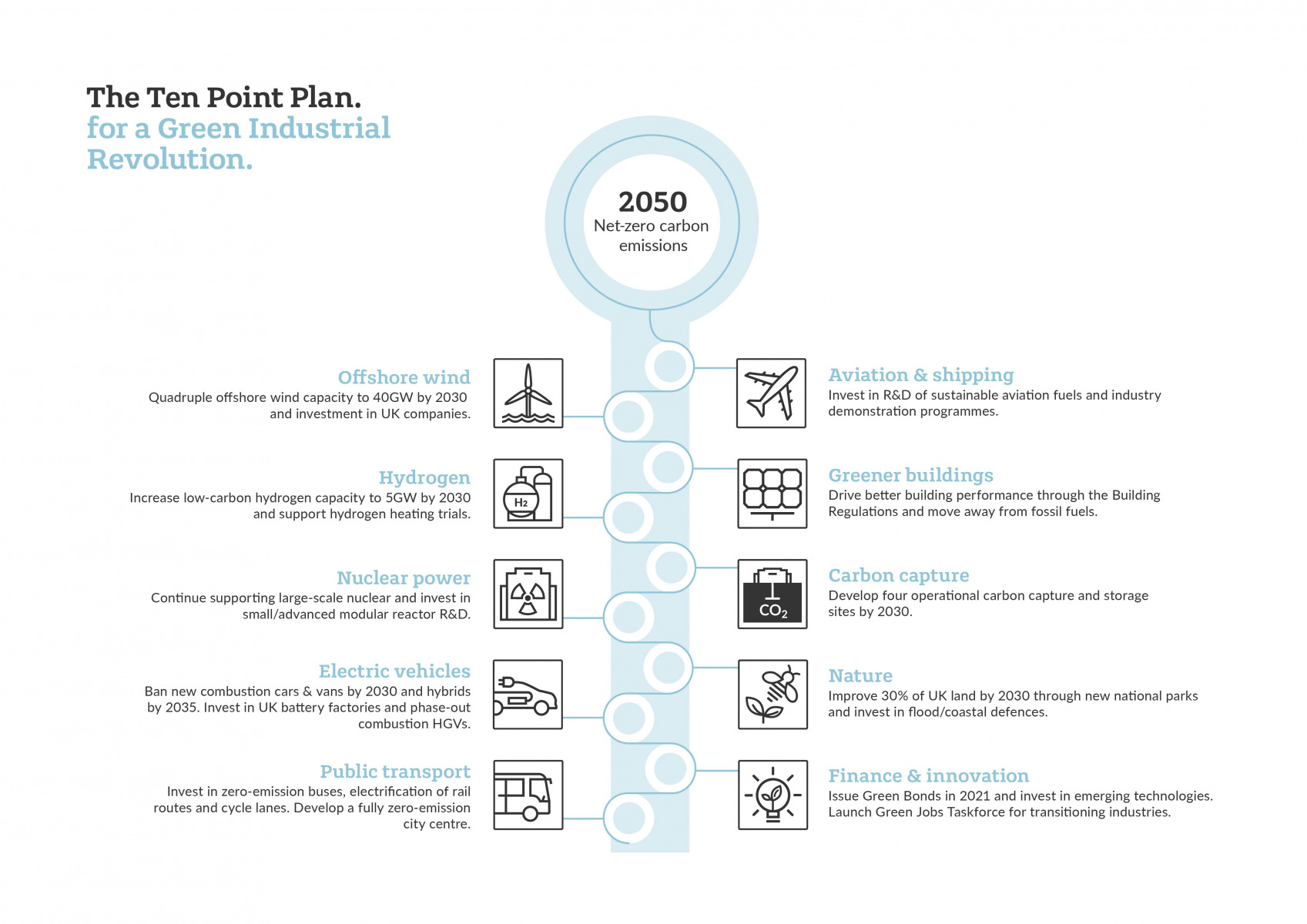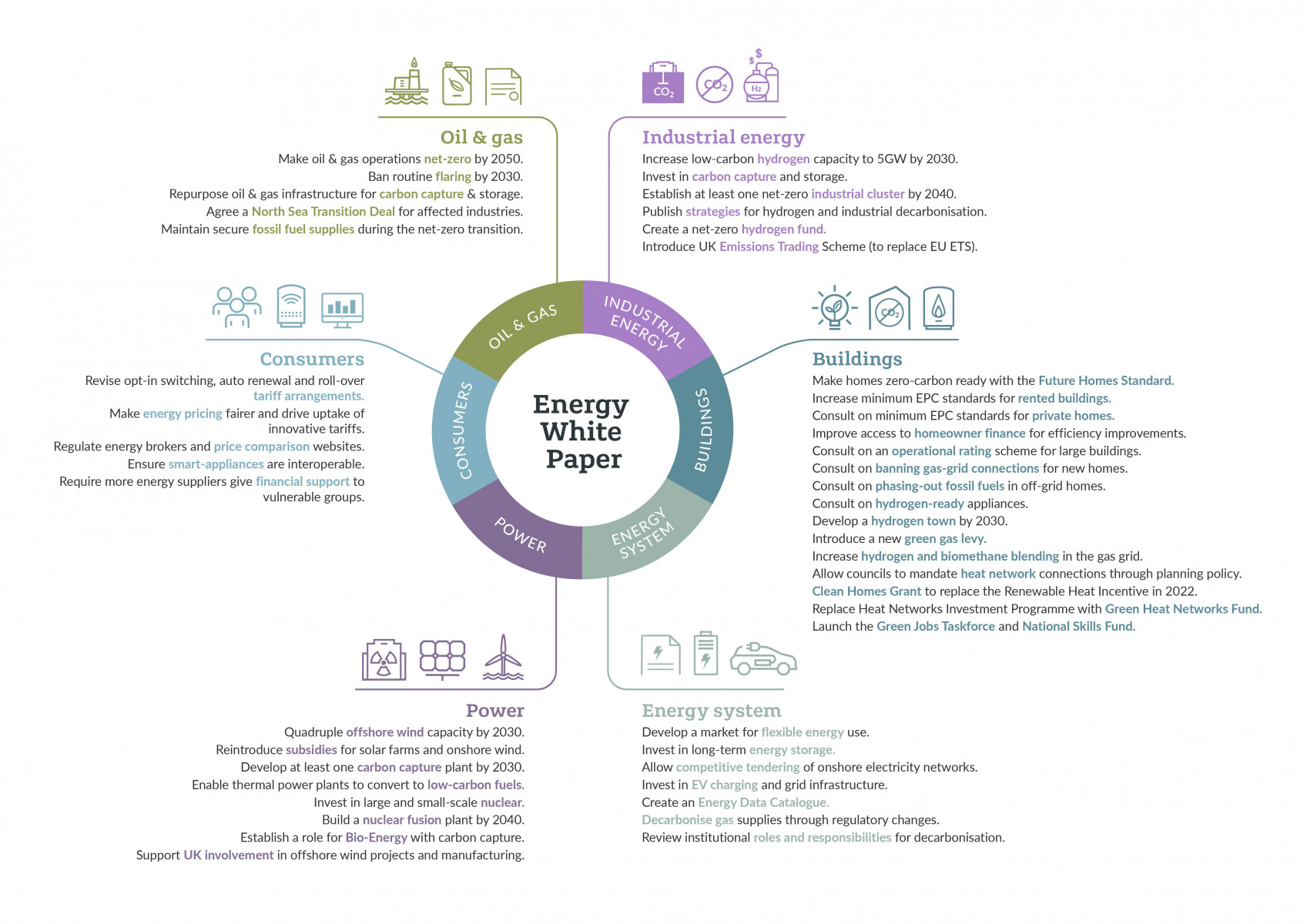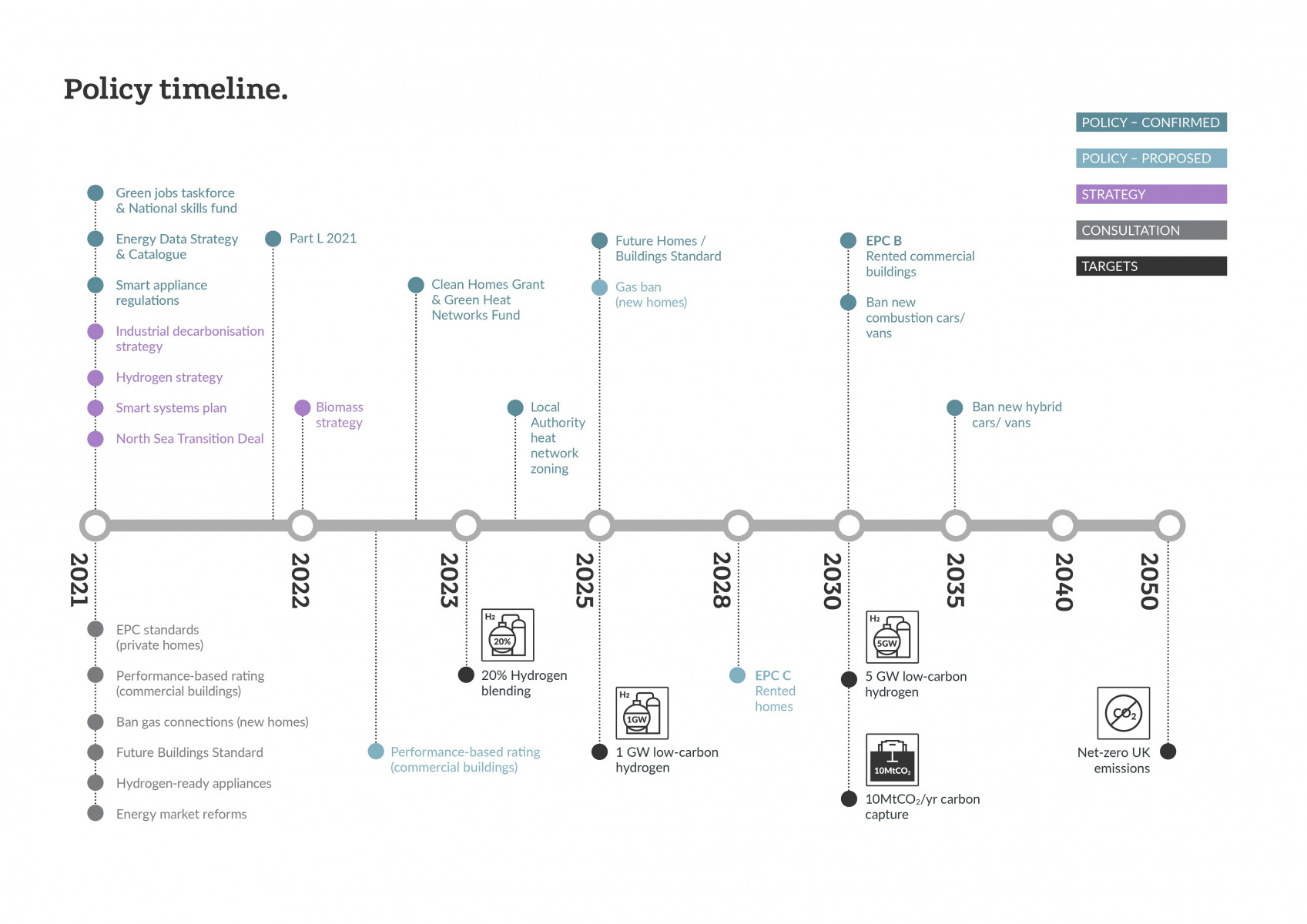Insights
What do the Ten Point Plan and Energy White Paper mean for the built environment?
An overview of the latest Government proposals.
Achieving net zero carbon emissions is an ever-growing priority for our industry, and we’re leading the charge in making this a reality as soon as possible as a partner for the UKGBC’s Advancing Net Zero programme.
Meanwhile, in the last few months of 2020, the Government published two documents that provide more detail around its plan to meet net zero carbon emissions by 2050.
As expected, there are a range of proposals that will impact on the built environment.
1. The Ten Point Plan.
Firstly, the Government’s Ten Point Plan, published in November 2020, outlined key focus areas that it’s prioritising. The plan identifies areas in which there are opportunities to simultaneously reduce greenhouse emissions, create new jobs and drive economic growth. These include increasing the UK’s renewable generating capacity; developing new technologies such as hydrogen, carbon capture and storage and nuclear fusion; transferring industry and transport away from fossil fuels; and making buildings more energy efficient.

Above: the Government’s priorities reflect the recommendations of the Committee on Climate Change and therefore provide a clear direction of travel for the medium to long-term. Click here for full size image.
So what does this mean for the built environment?
Several aspects of the Ten Point Plan are likely to impact energy strategies for new developments, including:
– An increase in building efficiency standards in new buildings, driven by the Building Regulations.
– Increasing the energy efficiency of existing buildings through higher minimum EPC performance standards (e.g. Minimum Energy Efficiency Standards – MEES).
– Further decarbonisation of grid electricity through additional renewable capacity and nuclear power. This will favour electrically-led developments.
– Heat Pumps are supported, and the Government has set a target of 600,000 installations per year by 2028 (a ten-fold increase on 2019 levels).
– The potential for Hydrogen to be blended with, or to replace natural gas on a regional basis. The Government back Hydrogen trials and technology development – large-scale role out is not proposed at the moment.
– A ban on combustion-only cars and vans has been brought forward to 2030, potentially signalling a higher demand for charging infrastructure in homes and workplaces.
2. The Energy White Paper.
Secondly, in December 2020 the Government published a White Paper that set out key proposals for achieving the Ten Point Plan and identifies how it plans to act in order to do this.

Click here for full sized image.
So what does this mean for the built environment?
The proposals will benefit the forward-thinking energy strategies for new developments and refurbishments in a number of ways:
– There will be more support for flexible energy usage, e.g. battery storage. The Government is consulting on ways to promote a market for flexible electricity and drive the development of new technologies.
Consultation outcomes will be key for developers looking to assess the costs and benefits of storage technologies.
– Minimum energy efficiency standards will be increasing. This will be driven by higher Buildings Regulations standards and Minimum Energy Efficiency Standards (MEES) for EPCs in rented buildings. The government are also consulting on introducing minimum EPC standards for private homes. A consultation on a performance-based rating scheme for large commercial and industrial buildings is proposed in 2021, with implementation proposed in 2023.
– Support for heat pump and heat network strategies. Consultations to-date indicate support for electrically-led developments (e.g. heat pumps) and connection to heat networks where feasible (i.e. following the Greater London Authority Approach). Support will be given to Local Authorities to mandate heat network connections, with mandatory decarbonisation required through the natural plant replacement cycle.
– There will be a larger role for charging infrastructure and vehicle-to-grid charging with the ban of new combustion-only cars and vans brought forward to 2030.

Click here for full sized image.
The recent Government publications appear to represent an evolution of existing energy policy, rather than a revolutionary new approach.
The support for highly-efficient, electrically-led developments driven through the Future Homes and Future Buildings Standards mirrors the approach taken by local authorities such as London to raise building standards above the Building Regulations minimum through local planning policy.
Having worked with clients across the UK on a number of schemes, we’ve also contributed to the latest cross-industry studies on delivering net-zero carbon buildings.
